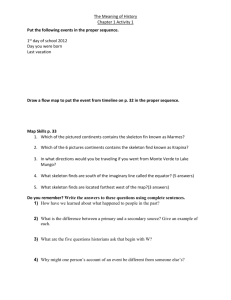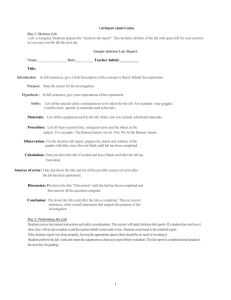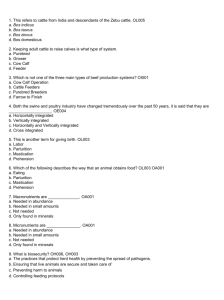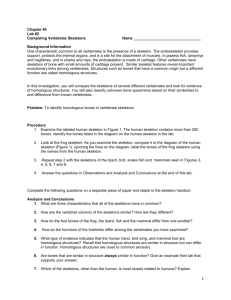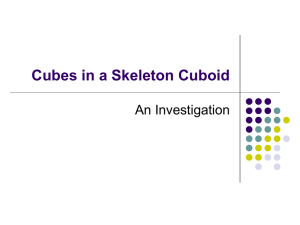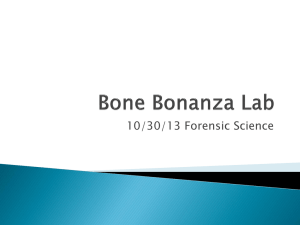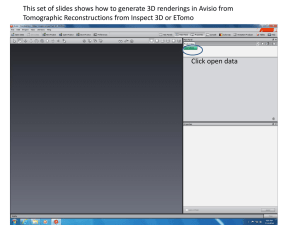Skeletons and gamma ray radiosurgery
advertisement
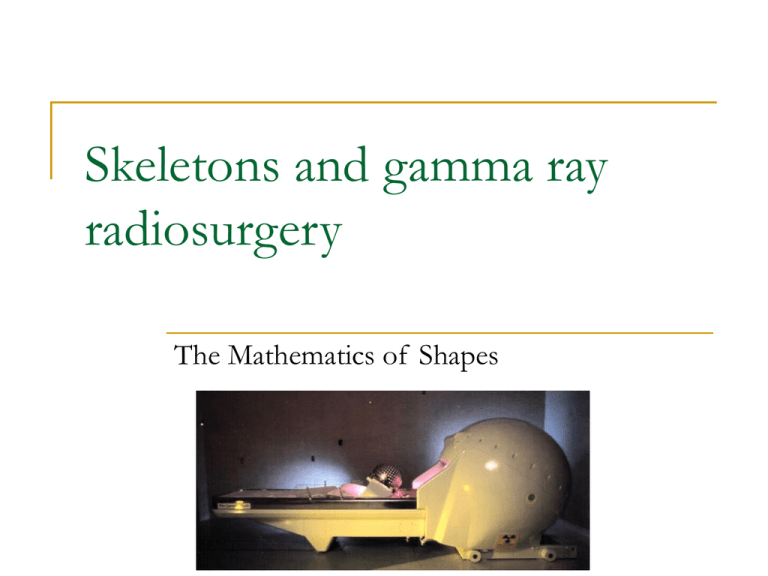
Skeletons and gamma ray radiosurgery The Mathematics of Shapes What is gamma-knife surgery? It is a non-invasive medical procedure used to treat tumors, usually in the brain. This is called radiosurgery since it uses radiation to perform the surgery. 201 Cobalt gamma ray beams are arrayed in a hemisphere and aimed through a collimator to a common focal point. The patient’s head is positioned so that the tumor is the focal point. The minimax problem Since the tumor maybe of irregular shape and spread over a region, the idea is to minimize the number of radiation treatments and maximize the portion of the area to be treated. When the beams are focused with the help of a helmet, they produce focal regions of various sizes. Each size of dose requires a different helmet and so the helmet needs to be changed when the dose radius needs to be changed. Since each helmet weighs 500 pounds, it is important to minimize the number of helmet changes. The mathematics of shapes Here is the target area on which the radiation is to be applied. Since the helmets have varying degrees of focal regions, several helmets have to be used. Sphere packing problem Since we have spheres of different sizes and not all of the affected region can be targeted, the problem can be formulated mathematically as follows: The skeleton of a region Let |X-Y| denote the Euclidean distance between two points in the plane or in space. Two dimensional skeletons We denote the skeleton of a region R by Σ(R). Simple skeletons Given a region in R2 we want to determine its skeleton since the centers of the focal regions will be situated along the skeleton. Skeletons in 3 R The gamma rays will be focused on selected points along the skeleton of the region. Three dimensional skeletons Our earlier definition of a skeleton applies in higher dimensions as well, and in particular to R3. However, here we can distinguish two portions of the skeleton. Some simple examples While the region is the solid filled cone, only the boundary is shown as well as one maximal ball and its circle of tangency. Skeleton of a wedge An infinite wedge consists of all points between two half-planes emanating from a common axis. A maximal sphere is shown with its points of tangency. Skeleton of a parallelepiped These examples are simple since the region is simple to describe. In general, the problem of finding the skeleton of a general region is based on computer algorithms. The optimal surgery algorithm Any dose in an optimal solution must be centered along the skeleton. If we have four sizes of doses, a<b<c<d (say), then the initial does should be at an extreme point of the skeleton. The iterative procedure After the first dose, the region has changed and we need to re-calculate the skeleton.
